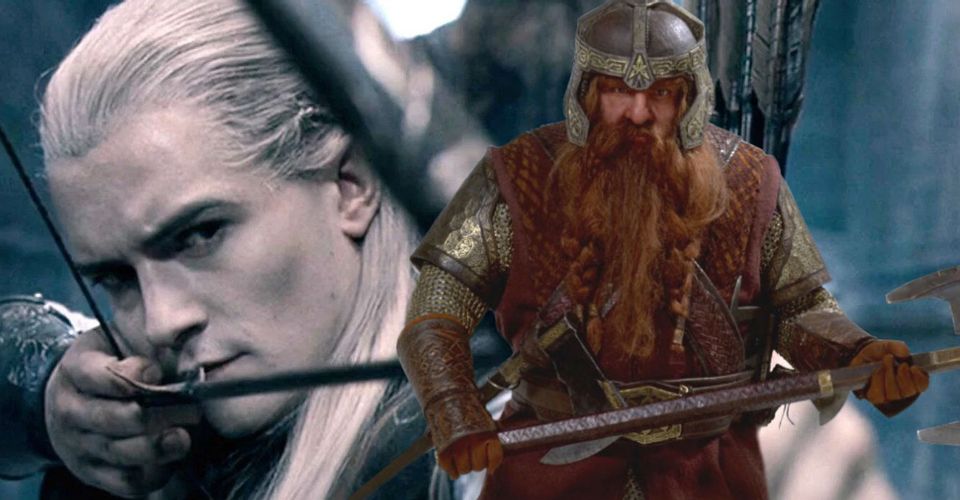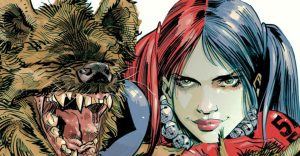Lord Of The Rings: Why Elves And Dwarves Hate Each Other

What triggered the intense distrust and ill-feeling between Elves and Dwarves in The Lord of the Rings? It’s common knowledge to even the most casual The Lord of the Rings fan that Legolas and Gimli are not on the best of terms when they initially team-up to join Frodo in the Fellowship, and their gradual development from strangers to rivals and, finally, to friends over the course of the story is one of the most celebrated arcs of the movie trilogy, aided greatly by the performances Orlando Bloom and John Rhys-Davies.
The growing camaraderie between Legolas and Gimli is symbolic of the wider breaking down of barriers that occurs following the war against Sauron. Such is the threat the Dark Lord poses to Middle-earth that races who previously had no business with each other come together and learn that they perhaps had more in common than they thought, forging stronger ties that last into the Fourth Age and Aragorn’s reign as King Elessar of Gondor. But while the antagonistic nature of Legolas and Gimli’s relationship is central to The Lord of the Rings, the actual reason for the Elf-Dwarf feud is mostly glossed over. Predictably, Tolkien wrote a fleshed-out history of relations between the two races elsewhere, on this occasion in The Silmarillion.
In Ancient Middle-earth, Dwarves and Elves actually got on fairly well at first, largely maintaining a friendly coolness, but occasionally coming together and co-operating to a degree during the First Age. It was King Thingol of the Teleri elves who first made genuine alliances with Dwarves and, impressed by their abilities in construction and craftsmanship, commissioned them to build his capital city of Menegroth. Thingol and his Dwarf allies also fought together against their mutual enemy, the Orcs, who were under the sway of Sauron’s predecessor, Melkor. As is typical of Middle-earth history, however, problems began to arise over a particularly valuable piece of jewelry.

As price for his daughter’s hand in marriage, Thingol demands a Silmaril, a coveted Elvish jewel renowned throughout Middle-earth, and that lends its title to Tolkien’s posthumously-released The Silmarillion. Thingol then recruits the Dwarves of Belegost to craft some pieces of Elvish treasure into items of jewelry, the greatest of which is a necklace called the Nauglamír, which Thingol subsequently requests his Silmaril be set into. Having created such a stunning piece with such a rare wonder at the center, the Dwarven smiths claim their creation as their own and refused to hand it over, causing Thingol to sour and insult the Dwarves, deeming them an inferior race. These words and the smiths’ greed spark a battle within Thingol’s capital and only two dwarves survive the clash. After escaping, however, this duo incite others of their kind to war by recounting an exaggerated version of events, and this ultimately results in Thingol being assassinated by an ambush of dwarves and his realm being looted. The Elves and Dwaves have been on icy terms ever since, though it’s likely that many have forgotten exactly why by the Third Age.
While the death of Thingol and the claiming of the Silmaril is the key cause of bad blood between these two races in Middle-earth, it could be argued that Elves and Dwarves were always destined to be at odds with each other. Elvish-folk were originally created by the God of Tolkien’s world, Ilúvatar, while the Dwarves were given life by the lesser Aulë. This intrinsically sets up the races as a superior and inferior species, since Ilúvatar didn’t make the Dwarves out of choice, but merely allowed them to exist out of kindness.
Although the story of Thingol is a lesser-known Tolkien tale, it might feel thematically similar to many The Lord of the Rings fans, with a widespread conflict caused by greed, a lust for precious things, and a smattering of personal treachery. The War of the Ring was triggered in much the same circumstances and while it’s not necessary to know the history of the conflict to enjoy Legolas and Gimli’s arc, it’s perhaps significant that their friendship comes about as a result of trying to destroy a highly-prized treasure, when their races started fighting after the creation of a one.
About The Author


















